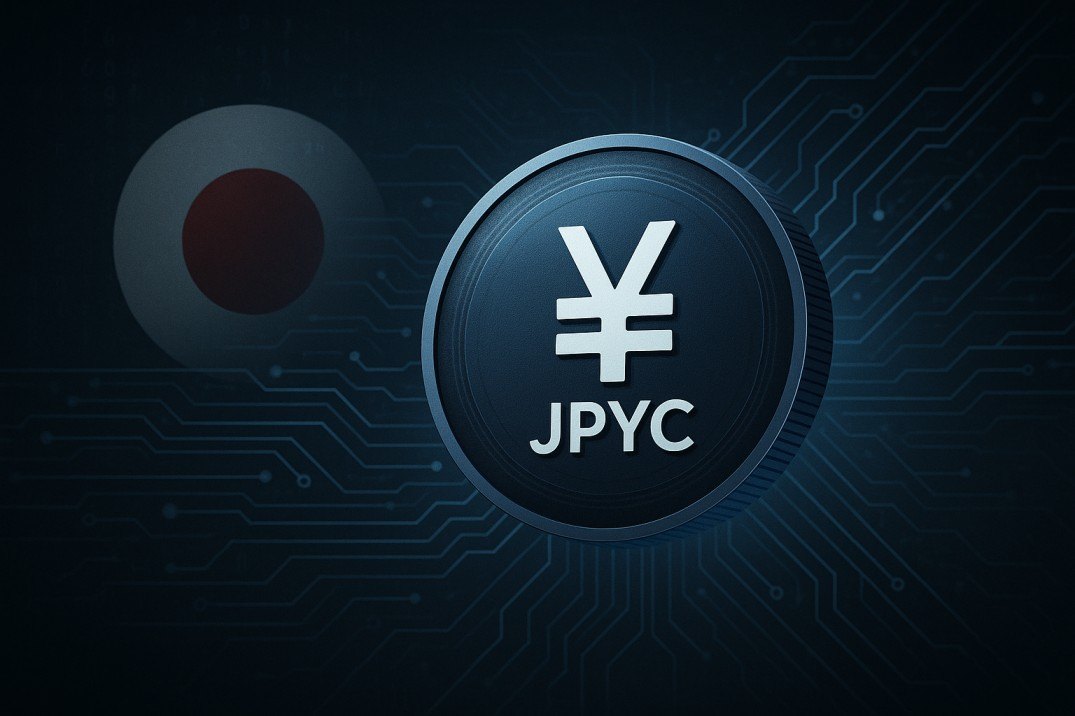TL;DR
- JPYC Inc. has launched Japan's first legally recognised yen-pegged stablecoin, backed one-to-one by yen deposits and Japanese government bonds.
- The token, called JPYC, is available on multiple blockchains including Ethereum, Avalanche and Polygon and is redeemable via a dedicated issuance/redemption platform.
- JPYC Inc. aims to reach an issuance balance of ¥10 trillion (approx. USD 65 billion) over three years and plans broad business integrations.
- The launch comes amid Japan's regulatory push for stablecoins under its revised Payment Services Act and growing interest in digital payments.
- Experts flag that although the yen is globally traded, stablecoin adoption may still be slow in a market accustomed to cash and credit card payments.
On Monday Tokyo time, JPYC Inc., a Tokyo-based fintech firm, formally issued its stablecoin known as JPYC, marking a watershed moment for Japan's digital-currency landscape. The coin is pegged 1:1 to the Japanese yen and backed fully by yen deposits and Japanese government bonds (JGBs).
What distinguishes JPYC is that it is the country's first legally recognised yen-denominated stablecoin, structured under the Payment Services Act's rules for electronic payment instruments rather than being treated simply as a speculative crypto asset. Through the launch of JPYC, Japan is signalling that stablecoins are no longer peripheral experiment, but part of its broader strategy for payment innovation, blockchain infrastructure and digital finance.
Structure, Backing and Platform Details

JPYC Inc. has built the token with full backing: for every JPYC issued, equivalent yen value is held via deposits and JGBs. Users can redeem tokens at any time on a one-for-one basis. The company emphasises both stability and compliance. To facilitate widespread use, JPYC operates on major blockchains-Ethereum, Avalanche, and Polygon-so users and businesses can integrate the token on existing infrastructure. The firm also launched a dedicated issuance and redemption platform, JPYC EX, where participants complete identity verification via Japan's My Number system to access the token.
JPYC Inc. has set an ambitious target: reaching ¥10 trillion (about USD 65 billion) in circulation within three years. The company also intends to deepen business integrations: fintech firms, retail payments platforms and enterprise software providers have already signalled support.
Regulatory Landscape
JPYC's launch is timely. Japan has been steadily modernising its stablecoin and digital-payment regulation. In June 2023, the country revised its laws to require stablecoin issuers to register under the Funds Settlement Act and Banking Act, establishing clearer rules for stablecoin issuance, reserve backing and custody. By achieving registration as a fund transfer service provider earlier this year, JPYC Inc. became the first to meet those requirements and proceed to issuance.
Japan's deep domestic government-bond market and its freely-convertible yen give the new stablecoin a structural edge compared with many other Asian currencies that face on-shore restrictions. Currency-market experts note that the yen's global footprint could allow JPYC to serve not just domestic payments but perhaps cross-border and regional settlement use-cases.
Why This Matters-and What It Could Unlock
Stablecoins generally offer faster settlement, lower transaction cost and 24/7 availability compared to legacy payment rails. JPYC's introduction creates the potential for yen-based digital settlement across commerce, remittances, Web3 applications and beyond.
Because the token is fully backed by domestic assets, integration into business workflows-such as e-commerce payments, enterprise platforms or blockchain-native services-becomes more credible. Early business partners include a fintech software firm developing retail/e-commerce payments and an enterprise data-integration software used by thousands of Japanese companies.
From a strategic standpoint, Japan now joins a small but growing group of jurisdictions attempting to bridge the stablecoin innovation curve-linking national currency, regulatory compliance, blockchain infrastructure and business adoption.
Challenges and Road Ahead
Despite its promise, JPYC faces hurdles. Japanese consumers and businesses remain highly reliant on cash and traditional digital payments, meaning adoption may proceed more slowly than in markets with larger crypto-native populations. Experts caution that even with excellent backing, the question remains whether businesses and users will shift to using yen-stablecoins in meaningful volume. Furthermore, while JPYC's reserves and backing appear robust, stablecoins in practice depend on trust, transparency and redemption ease. Ongoing regulatory scrutiny, operational readiness, wallet security, integration partnerships and market education will be key factors.
Another uncertain angle is competition: major Japanese banks (e.g., MUFG, SMBC) and financial firms are reported to be exploring yen-stablecoins of their own. JPYC must scale ahead to secure first-mover advantages.
Final Thought
The launch of JPYC represents more than a fintech milestone-it signals Japan's intention to turn its national currency into a digital native asset while maintaining regulatory clarity and backing. If JPYC gains traction, it could serve as a template for how sovereign currencies migrate into blockchain-enabled realms without sacrificing fiat legitimacy.
Whether businesses adopt it at scale, whether consumers embrace it for payments and whether it travels beyond Japan are open questions. But one fact is clear: a yen-stablecoin backed by government bonds and regulated under Japanese law is now live-and it may well be the foundation upon which Japan builds its digital-currency future.











